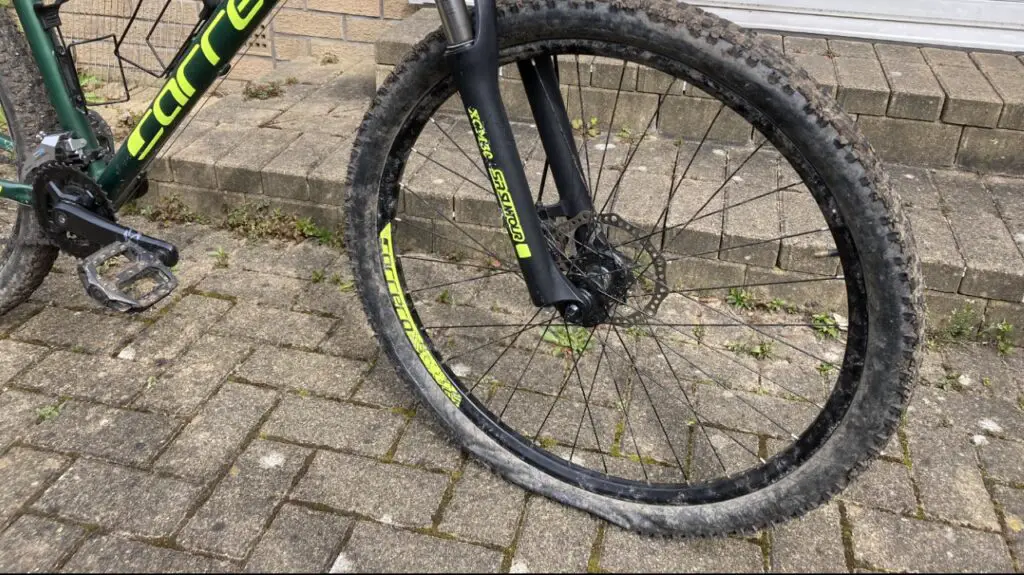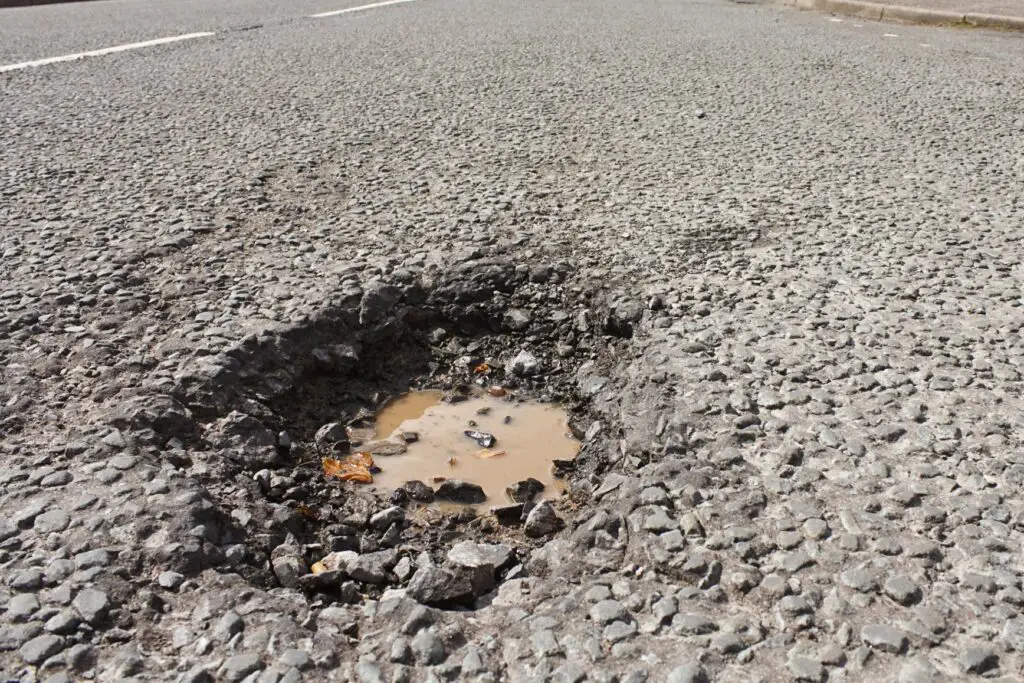Nothing ruins a ride quite like getting a flat, but you might be wondering whether the likelihood of a puncture is lower on a mountain bike compared to a road bike.
Keep reading to find out which type of bike is most likely to get a flat and why.
Here’s the Likelihood of Getting a Puncture on a Mountain Bike vs. a Road Bike:
Mountain bike tires have thicker treads than road tires making it harder for sharp debris to pierce the inner tube. Additionally, mountain bike tires are inflated to lower pressures making them better at absorbing impact. With the correct tire setup, a mountain bike will typically get fewer punctures.
Table of Contents

Why Do Mountain Bikes Get Fewer Punctures than Road Bikes?
Okay, the truth is I can’t tell you that you’ll definitely get less punctures on a mountain bike than you would on a road bike.
What I can tell you is that mountain bike tires are thicker and more robust than road tires as they’re made to cope with the demands of off-road riding.
On top of that, mountain bike tires are inflated to a considerably lower pressure than road bike tires making them more able to absorb impact.
In order to explore why mountain bikes are, in theory, less likely to get a flat than road bikes, let’s take a look at the most common causes of punctures and compare the two:
Punctures From Sharp Debris:
Probably the most common cause of a puncture is riding over something sharp and nasty on the road or the trail.
This can be anything from broken glass or thorns, to sharp jagged rocks.
Of course, both types of bike are susceptible to riding over something sharp, but the treads of a mountain bike tire are much thicker than those found on road bikes.
The thicker tread makes it harder for the debris to penetrate through to the tube, providing more protection to the inner tube.
The other factor working in the mountain bikes’ favor is that mountain bike tires are typically inflated to 25psi – 50psi, compared to a typical road bike tire that is rated to 80psi – 120psi.
The lower pressure means the tire is able to deform to a greater extent, effectively dampening the impact of the sharp object.
Blowouts from Impact:
Another common type of puncture occurs when an obstacle in the road or the trail causes a sudden impact on your tire.
Think about potholes or tree roots – obstacles that aren’t necessarily sharp but cause a sudden jolt.

When you hit an obstacle like this, your tire compresses. This compression momentarily reduces the volume of your tire causing the pressure to increase.
If the pressure increase exceeds the maximum pressure rating of your tire it will rupture.
This type of puncture is typically very sudden and aggressive as all of the air is expelled immediately. You can easily find yourself in a heap on the floor following a blowout.
Mountain bike tires are more able to absorb the impact of a pothole or tree root, as their lower pressure means the tire can deform over the obstacle without exceeding the max pressure rating of the tire.
The majority of mountain bikes also have suspension to absorb this type of impact, whereas road bikes rely purely on compression of the tire to absorb the blow.
This combination of lower tire pressures and suspension makes mountain bikes far less susceptible to blowouts than road bikes.
Pinch Flats:
Pinch flats occur when an impact on the tire from an obstacle causes the inner tube to be pinched against the wheel rim.
This type of flat is usually a result of riding without enough air in the tires.
When a tire is under-inflated, hitting an obstacle is more likely to deform the tire to the extent that the tube is pinched between the tread and the wheel rim.
Admittedly, this type of puncture is just as likely to happen on a mountain bike as on a road bike. That said, pinch flats can be avoided on any type of bike simply by sufficiently inflating the tires.
The Likelihood of a Puncture Is Also Dependent on the Terrain:
Mountain bikes are designed to absorb the impact of riding over rocks, tree roots, and even heavy landings from jumps.
Compared to road bikes which are designed for speed and optimized for efficiency of energy transfer, it’s easy to jump to the conclusion that a road bike will get more flats.
However, things aren’t quite that simple.
Whilst it’s true that a road bike is more likely to get a flat than a mountain bike riding on the exact same terrain, this assumption is not true to reality.
In reality, whilst a road bike is flying along smooth roads a mountain bike could be hitting jumps, navigating technical rock gardens, or shredding an unkempt trail.
Therefore, a mountain biker is more likely to encounter sharp rocks, thorns, drop-offs, and other puncture hazards.
There’s also the major element of luck to consider.
How Can You Reduce Your Chances of a Puncture (Regardless of the Type of Bike You Ride)?
Whether you ride a road bike or a mountain bike, here’s a list of things you can do to reduce your chances of a flat:
Pick Your Line
The absolute best way to avoid a puncture is to avoid an obstacle in the first place.
It’s not always possible of course but if you do have time to react, try and ride around the pothole or thorn-laden branch.
Check Your Tire Pressure
Check your tire pressure before each ride to make sure you’re within the recommended psi range for your specific tire. This will massively reduce your chances of a pinch flat.
If you’re unsure what psi you should be aiming for, check around the sidewall of your tire. It’s typically written there.
Inspect Your Tires
Inspect your tires before and after (and ideally during!) every ride.
Sometimes a piece of glass or a thorn will get stuck in your tread but won’t result in a puncture straight away.
Over time it will penetrate deeper until eventually it pierces your inner tube and leaves you with a flat.
Remove anything stuck in your tread as soon as you spot it.
If you catch it in time you can prevent it!
Puncture Proof Tires
Regardless of the type of bike you ride, it’s worth investing in a set of tires with puncture protection, such as Kevlar belted tires.
